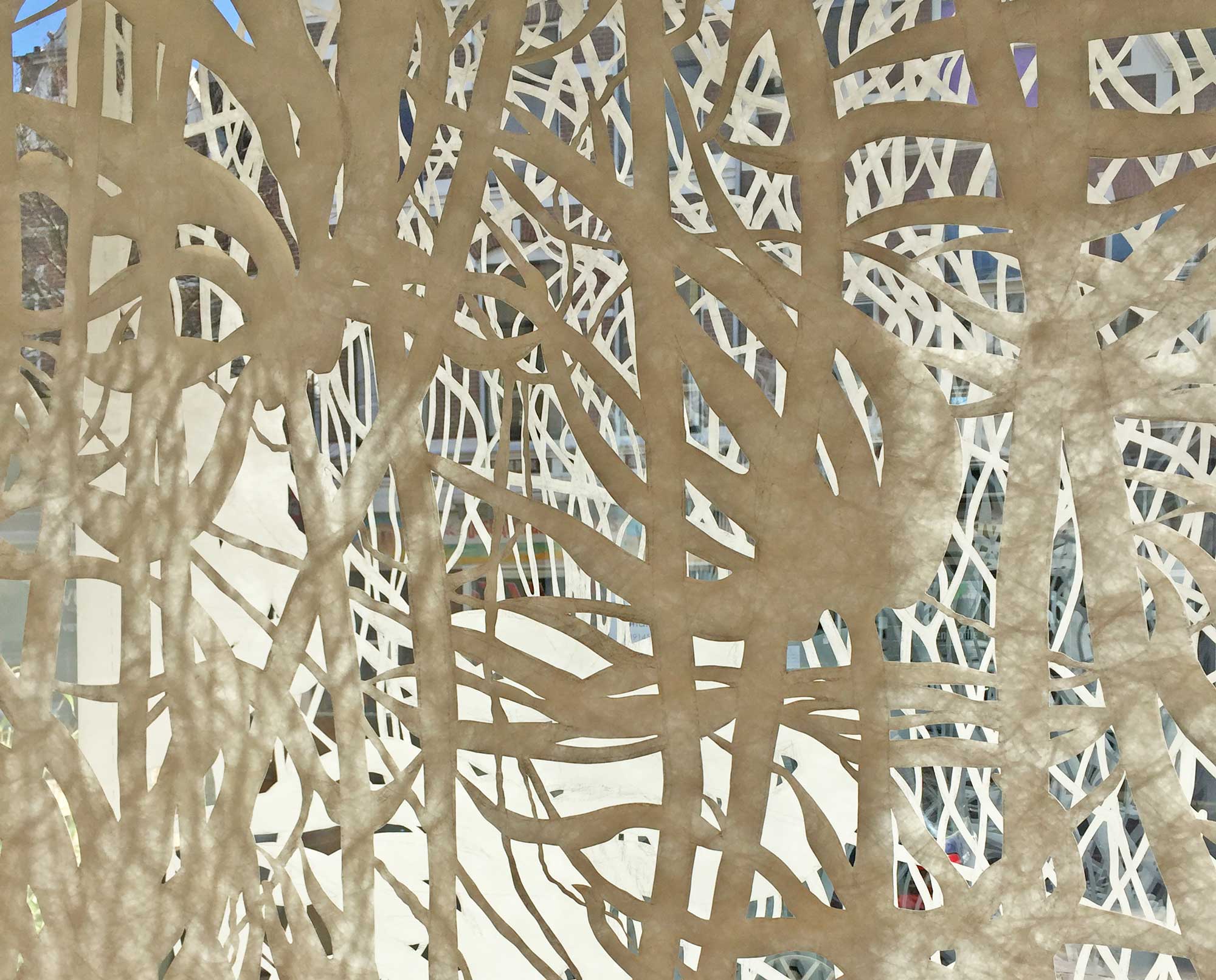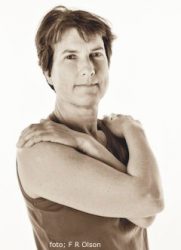![]()
![]()
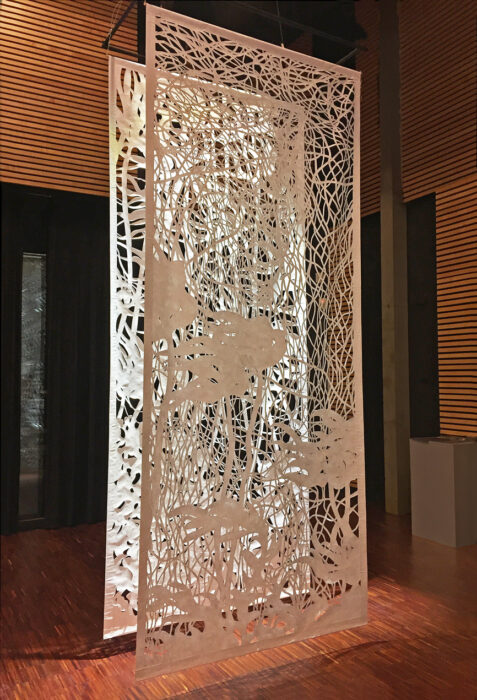

Langs de Atlantische kust van Ierland, waar de zee zich tijdelijk terugtrekt en de bodem even land wordt, verschijnen op de rotsen bizarre vormen van zeewieren. Groot, geheimzinnig en bijna buitenaards. Hun taaie, leerachtige structuren glanzen in het natte licht, soms half doorschijnend als de huid van een vreemd zeewezen. Ze roepen verwondering op — hoe zou het zijn om tussen zulke vormen door te bewegen, ze van dichtbij te ervaren?
Die gedachte vormde het uitgangspunt voor Zeewierwoud. Tijdens het maakproces heb ik me intensief verdiept in de vormen en bewegingen van zeewier. Ik bestudeerde talloze foto’s van kelpwouden en bewoog mee met de ritmes van het wier in onderwateropnames. Deze beelden vormden een bron van inspiratie: de grilligheid van lijnen, de gelaagdheid, het dansende karakter van het zeewier onder invloed van stroming en licht.
Kelpbossen zijn een verborgen wereld, wiegend op de grens tussen droom en werkelijkheid. Ze produceren zuurstof, bieden schuilplaatsen aan talloze organismen en zouden in de toekomst zelfs een belangrijke voedselbron kunnen zijn. Zeewierwoud is een hommage aan deze wonderlijke onderwaterbossen — levend, vitaal, en onmisbaar.
Het werk is ontstaan in de lente van 2020, tijdens de intelligente lockdown. In de plotselinge stilte van die periode viel het alledaagse rumoer weg en ontstond ruimte voor diepe concentratie. Die omstandigheden — uitzonderlijk en indringend — hebben hun sporen nagelaten in het werk.
De installatie bestaat uit gesneden tekeningen. Het snijden is een fysiek proces: de beweging van de hand volgt de lijn, het lichaam beweegt mee. Het is dansen met het scherp van de snee. Elke snee opent het oppervlak en laat de omgeving toe in het werk. Door meerdere lagen opengewerkte vlakken achter elkaar te plaatsen, ontstaat een gelaagde, steeds veranderende wereld van vormen. Lichtval, schaduwen en de beweging van de toeschouwer brengen het werk voortdurend tot leven — als een woud dat ademt met de ruimte eromheen.
Sgrafitto
Raquel Rodríguez Puebla, muurreliëf.
De gesneden bladen zijn in de etalage van BenT Weimarstraat 51 in Den Haag voor het eerst tentoongesteld. Eén van de eerste reacties kwam van Raquel Rodríguez Puebla, een buurtgenote uit de Newtonstraat. Zij werkt met sgrafitto. Haar interesse ontstond in Segovia, waar zij opgroeide. Alle gevels in het historische centrum zijn versierd met patronen die in de nog natte kalkstuc gesneden werden.
Enthousiast geworden door de mogelijkheden om de tekening uit te werken in sgrafitto, liet zij mij kennismaken met deze ambachtelijke techniek. We besloten om een deel van de tekening om te zetten in een sgraffito muurreliëf. Een deel van het eerste blad is een tekening gemaakt. Met houtskoolstof, dat door de gaatjes in de tekening kan, werd de tekening overgezet op de natte kalk.
Hier onder een paar foto’s van het proces.
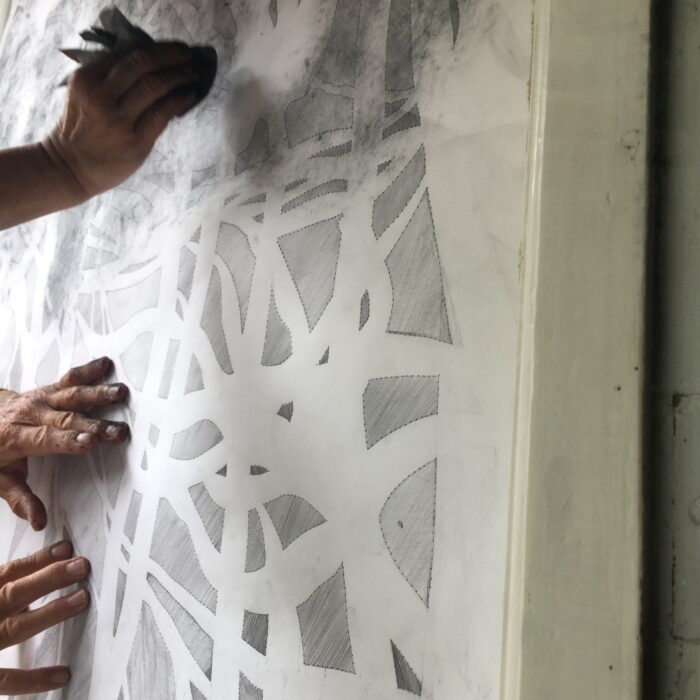
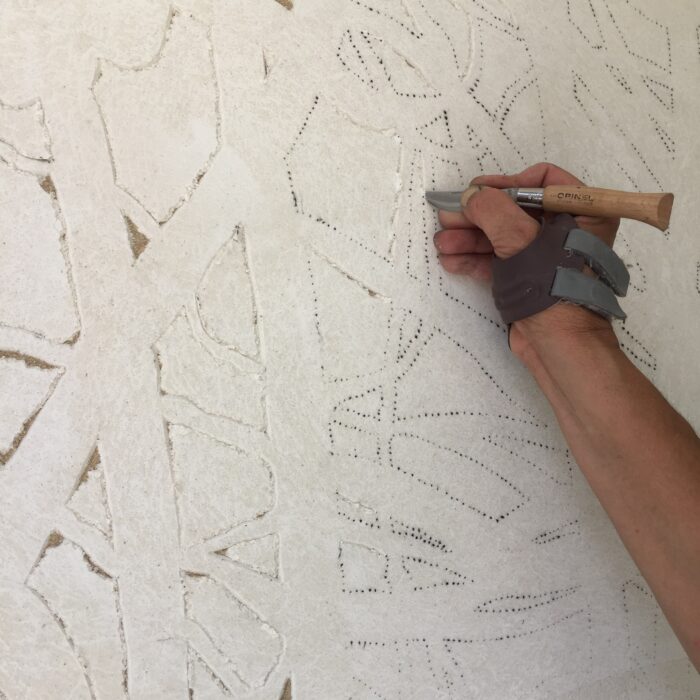



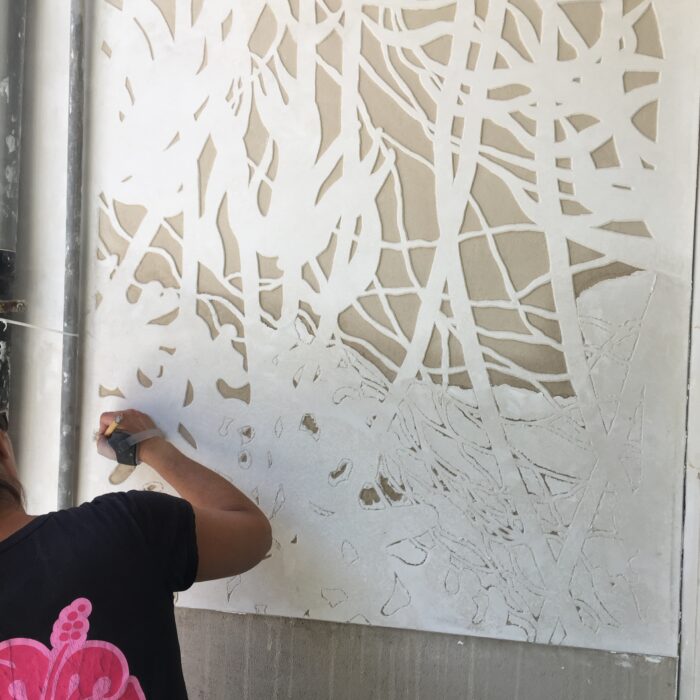


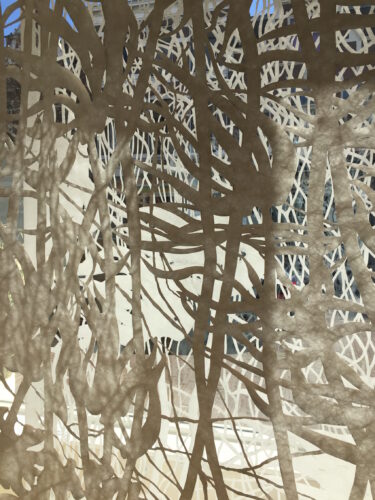
![]()
Along Ireland’s Atlantic coast, where the sea occasionally withdraws and the seabed becomes exposed land, bizarre forms of seaweed appear on the rugged rocks. Large, mysterious, and almost otherworldly. Their tough, leathery structures glisten in the damp light, sometimes translucent like the skin of strange sea creatures. They evoke a sense of wonder — what would it be like to move among these forms, to encounter them up close?
That question became the starting point for Seaweed Forest. During the making process, I immersed myself in the shapes and movements of seaweed. I studied countless photographs of kelp forests and attuned myself to the rhythms of underwater footage — how the strands sway, how light plays along their contours. These images served as a source of inspiration: the tangled lines, the layering, the slow and silent choreography of seaweed in water.
Kelp forests are a hidden world, drifting on the border between dream and reality. They produce oxygen, shelter a diversity of life, and may even become a vital food source in the future. Seaweed Forest is a tribute to these underwater woods — living, vital, and indispensable.
The work was created in the spring of 2020, during the so-called “intelligent lockdown.” In the sudden stillness of that period, the noise of daily life fell away, allowing for deep concentration. Those exceptional circumstances left a distinct mark on the final result.
The installation consists of cut drawings. Cutting is a physical process: the hand follows the line, the body moves along. It is a dance along the edge of the blade. Each cut opens the surface, letting the surrounding space enter the work. By layering these open forms behind one another, a shifting, multi-dimensional landscape of shapes emerges. Light, shadow, and the viewer’s movement all become part of the experience — like a forest breathing with the space around it.
Along Ireland’s Atlantic coast, where the sea occasionally withdraws and the seabed becomes exposed land, bizarre forms of seaweed appear on the rugged rocks. Large, mysterious, and almost otherworldly. Their tough, leathery structures glisten in the damp light, sometimes translucent like the skin of strange sea creatures. They evoke a sense of wonder — what would it be like to move among these forms, to encounter them up close?
That question became the starting point for Seaweed Forest. During the making process, I immersed myself in the shapes and movements of seaweed. I studied countless photographs of kelp forests and attuned myself to the rhythms of underwater footage — how the strands sway, how light plays along their contours. These images served as a source of inspiration: the tangled lines, the layering, the slow and silent choreography of seaweed in water.
Kelp forests are a hidden world, drifting on the border between dream and reality. They produce oxygen, shelter a diversity of life, and may even become a vital food source in the future. Seaweed Forest is a tribute to these underwater woods — living, vital, and indispensable.
The work was created in the spring of 2020, during the so-called “intelligent lockdown.” In the sudden stillness of that period, the noise of daily life fell away, allowing for deep concentration. Those exceptional circumstances left a distinct mark on the final result.
The installation consists of cut drawings. Cutting is a physical process: the hand follows the line, the body moves along. It is a dance along the edge of the blade. Each cut opens the surface, letting the surrounding space enter the work. By layering these open forms behind one another, a shifting, multi-dimensional landscape of shapes emerges. Light, shadow, and the viewer’s movement all become part of the experience — like a forest breathing with the space around it.
